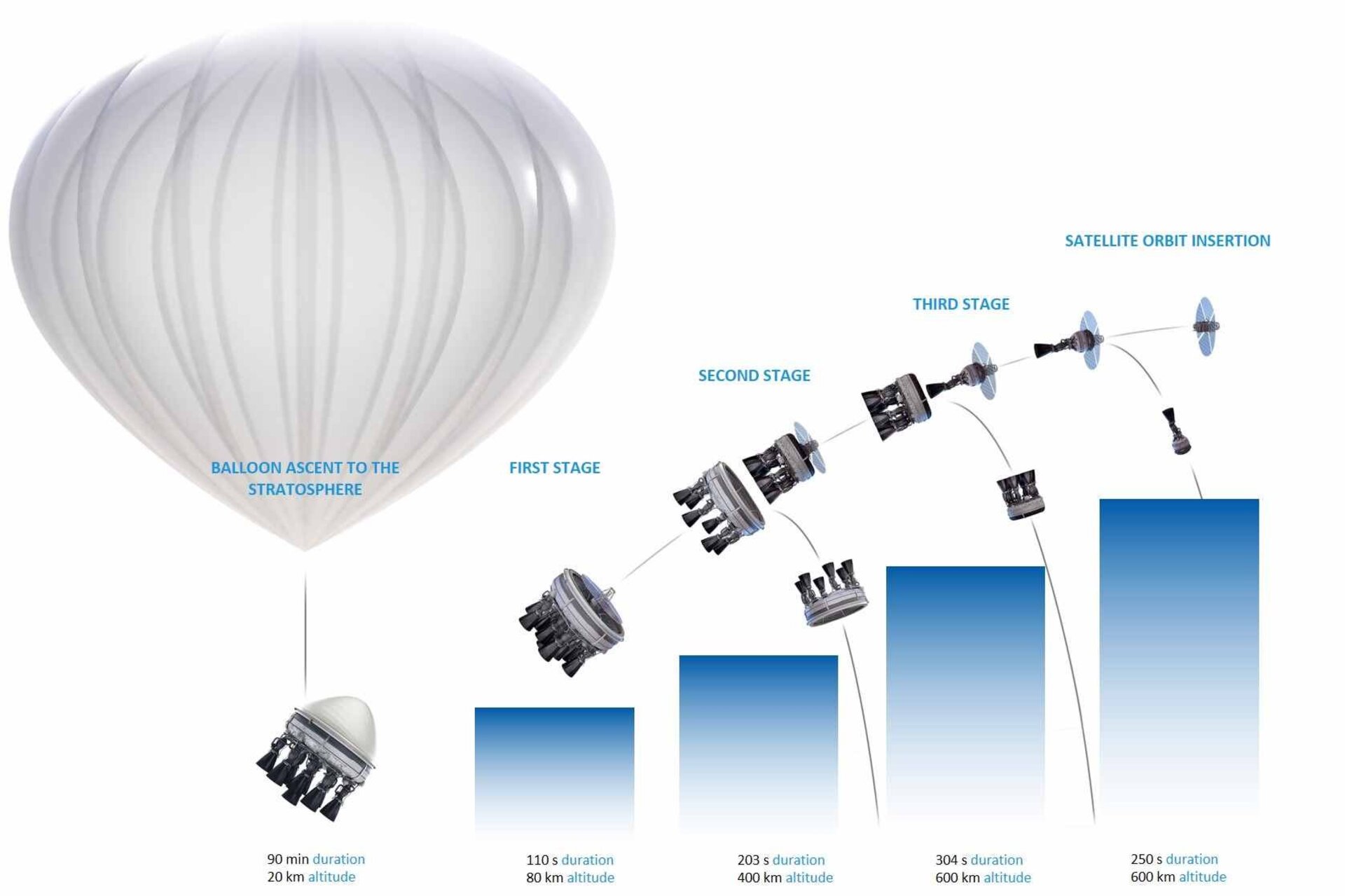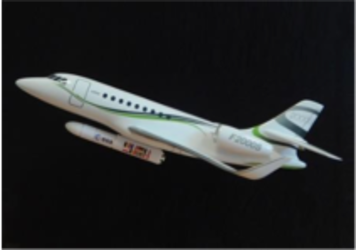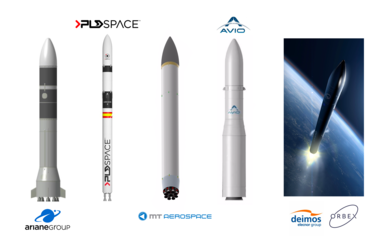

Bloostar microlauncher
MT-Aerospace in Germany offers four microlauncher concepts with either ground, air or stratospheric launch capabilities: MTA, WARR, Bloostar (being developed by Zero 2 Infinity) and Daneo.
A stratospheric helium balloon carries Bloostar, weighing about 5 tonnes, to an altitude above 20 km where Bloostar blasts off and separates from the balloon platform. This three-stage vehicle uses liquid methane and oxygen in pressure fed engines.
Launching a rocket above 99% of the mass of the atmosphere, where the aerodynamic resistance is almost nonexistent, yields several significant advantages compared to a standard ground-based launch. Among them: lower drag losses, lower gravity losses and nozzles working at optimum performance, and reduced thermal heat flux by a factor of ten, thus benefitting from significant mass savings.
-
CREDIT
Zero 2 Infinity -
LICENCE
ESA Standard Licence

Daneo microlauncher

Microlauncher concepts

Stratospheric balloon furthers CAIRT

Greenland viewed from the stratosphere

